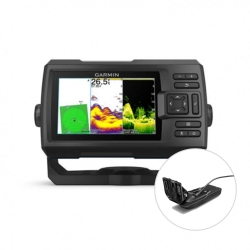Your cart
There are no more items in your cart
Depth sounder

With our echosounder we will be able to see what is happening below the surface of the water. The depth sounder actually offers so much useful information, from the smartest models with simple depth readings, to the more sophisticated models with high-definition scanning under or on the sides of the boat. The depth sounder is also able to show us with different shades of color even the movement of fish and indicate the depths where to make our sport fishing trips.
Read more
With our echosounder we will be able to see what is happening below the surface of the water. The depth sounder actually offers so much useful information, from the smartest models with simple depth readings, to the more sophisticated models with high-definition scanning under or on the sides of the boat. The depth sounder is also able to show us with different shades of color even the movement of fish and indicate the depths where to make our sport fishing trips.
































